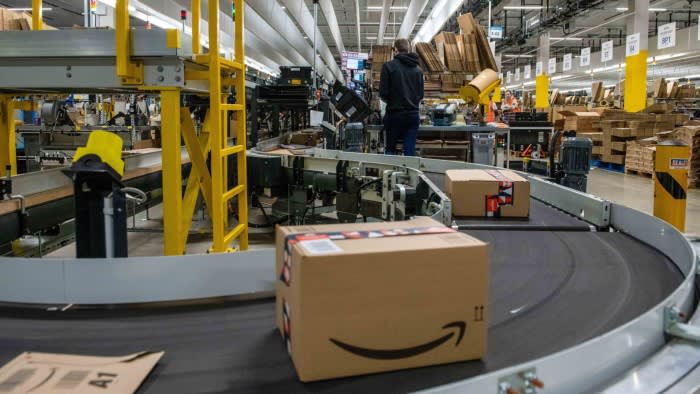Unlock the Editor’s Digest for free
Roula Khalaf, Editor of the FT, selects her favourite stories in this weekly newsletter.
Amazon’s international arm is on track to swing to an annual profit as moves to streamline the retailer’s logistics operations bear fruit after years of losses.
The $131bn unit, which serves Amazon’s customers outside North America, looks set to report an operating profit of $1.6bn this year, rising to more than $5bn next, according to analysts in a recent Refinitiv poll. Analysts at JPMorgan have gone further, with a forecast of $4.3bn in 2024.
The tech giant’s international segment posted a $2.7bn operating loss last year, but a strong start to 2024 pushed the business to profit during the first quarter. The unit had previously last turned an annual profit during the pandemic which led to a shortlived boom for ecommerce groups.
The change in fortunes comes after Amazon has worked to better organise its warehouses and delivery operations in key overseas markets, such as Germany and the UK, leading to faster delivery times and cheaper local operations.
“It seems to me they have figured it out,” said Rick Watson, founder of RMW Commerce Consulting. “Even with the launch of new countries, I don’t think you will see international profitability dip back negative again.”
Amazon launched its first international stores in 1998, but its overseas operations have struggled to turn a consistent profit. The unit has racked up $18.8bn in cumulative annual operating losses since the ecommerce group established its current reporting structure in 2016.
Amazon recently reorganised its North American logistics network in order to store goods closer to customers to slash delivery costs and times, and increase order frequency. Its domestic segment reported operating income of $14.9bn last year.
The lessons of the US overhaul would “apply to our international operations”, said chief executive Andy Jassy in May. The overseas segment would “be a big, profitable business for us”, he added, with the performance of “established” markets such as the UK and emerging ones such as Brazil improving.
Amazon’s growing advertising business and increased warehouse automation are also expected to help propel global ecommerce profits.
The company does not break out the financials of each of its overseas markets, but has said that certain mature ones including the UK, Japan and some European countries are profitable.
Amazon has come under investor pressure for more transparency in the disclosure of its international accounts and where and how much tax it pays overseas.
The group’s continued push to reduce delivery times comes as competition heats up from Chinese ecommerce rivals including Temu and Shein, which offer a vast range of cheap goods to consumers willing to wait longer for their purchases. The US giant in June outlined plans for a direct-from-China discount section.

However, Jack Cox, head of European logistics at real estate group CBRE, pointed to a “linear relationship” between market share and delivery time.
“We see a proliferation of smaller [warehouses] in and around cities,” he said. “Occupiers are willing to pay higher rents in those locations to win market share.”
Although consumers in nearly every nation worldwide can buy from Amazon’s online stores, the company only operates a physical logistics network of warehouses and delivery hubs in a much smaller number of countries.
Amazon’s rollout of physical operations in a new market usually meant that country was “unprofitable for three to seven years”, said Derek Lossing, a supply chains adviser who spent six years at Amazon. “You make a big commitment and then it drags on your international profits.”
According to supply chain consulting group MWPVL, Amazon is planning to open 49 new facilities worldwide. A fifth of those are in Germany, where the group said in June that it would invest €10bn to expand its logistics network and cloud infrastructure.
The value of the company’s international property and equipment has nearly trebled since 2019, rising from $9.6bn five years ago to $24.4bn in 2023, according to its accounts.


